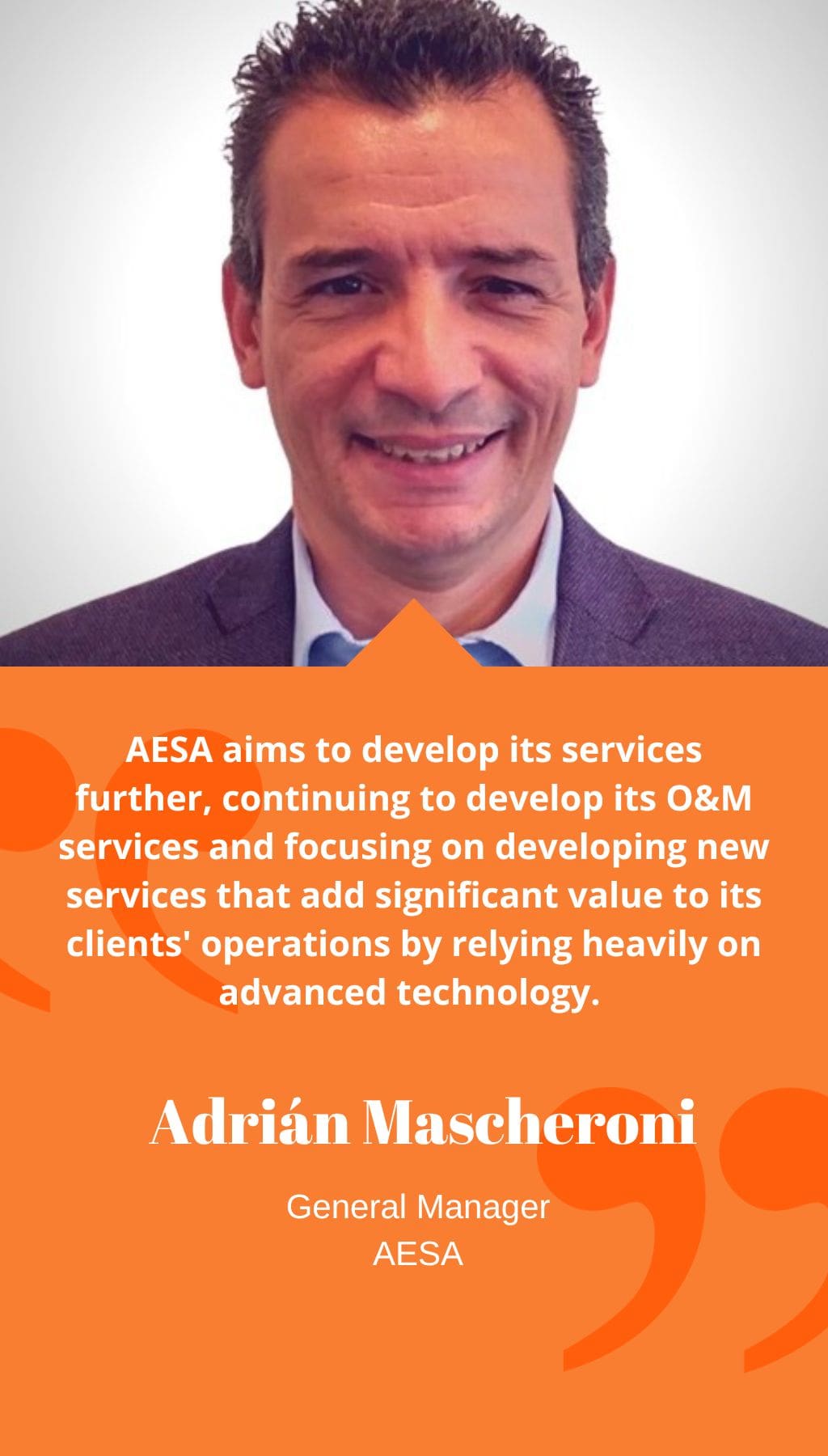
- Argentina | 7 June 2017

Could you please explain the evolution of AESA’s business units?
AESA currently has four business units, namely, manufacturing, construction, services, and engineering. The company started its journey in 1948 as a metallurgical manufacturer for the oil and gas industry, with its first contracts related to YPF projects. After entering the equipment manufacturing sector, AESA also became a small construction contractor for upstream facilities. In the 1990s, AESA diversified its business by offering operation and maintenance services, which soon became one of its most crucial business units. Later, in 2003 to 2005, AESA established an engineering department to cater to the increasing participation of the company in bidding rounds for more complex EPC projects. In 2008, the company introduced a fourth business unit, i.e., engineering. Construction is the most significant source of revenue, contributing around 50% to 55%, followed by services at 30% to 55%, manufacturing at 10%, and engineering at 2% to 3%.
How did AESA’s business model change after YPF’s acquisition in 2001?
In the early 2000s, AESA underwent significant changes due to changes in the market throughout the 2000s. The company’s strategy from 2005 to 2008 was to seek projects outside the country, primarily in Latin America, to address the reduced availability of projects in Argentina. Consequently, AESA executed significant projects in Peru, Bolivia, and Uruguay from 2008 to 2012, and before 2012, the company’s most significant EPC project was the ANCAP project aimed at enabling the La Teja Refinery in Montevideo to produce high-quality combustibles with low-sulfur content, in line with new international standards.
Did YPF’s re-nationalization in 2012 affect AESA?
After YPF’s re-nationalization, the company pursued an aggressive investment strategy that did not exist before. YPF increased its rig count from 20 to 80 drilling rigs, leading to an increased need for production facilities. After focusing on downstream projects for an extended period, AESA began participating in E&P projects, and since 2012, the company’s projects portfolio share has moved to half upstream and half downstream. Despite the ongoing demand for EPC projects outside Argentina, AESA decided in 2012 to focus on projects exclusively within Argentina for YPF and other oil and gas companies.
What has been AESA’s most important project in the last five years?
AESA’s most important project, which is still underway, is the construction of a new coke facility for YPF’s La Plata Refinery, the most crucial refinery in Argentina. The coke project is the most important industrial project in the country. AESA won the project at the end of 2012 through a bidding process where it competed with companies like Odebrecht, Techint, and Skanska. However, the project faced some challenges as a fire in the refinery forced it to be fast-tracked. Nevertheless, AESA has been able to meet the challenge by increasing the budget, committing to safety, quality of the final outcome, and the accelerated timeline, and expects to complete the construction of the coke facility in 2017.
Which of the four business units is AESA planning to develop further?
AESA aims to develop its services further, continuing to develop its O&M services and focusing on developing new services that add significant value to its clients’ operations by relying heavily on advanced technology. Examples of these services include digital field services and environmental services.














